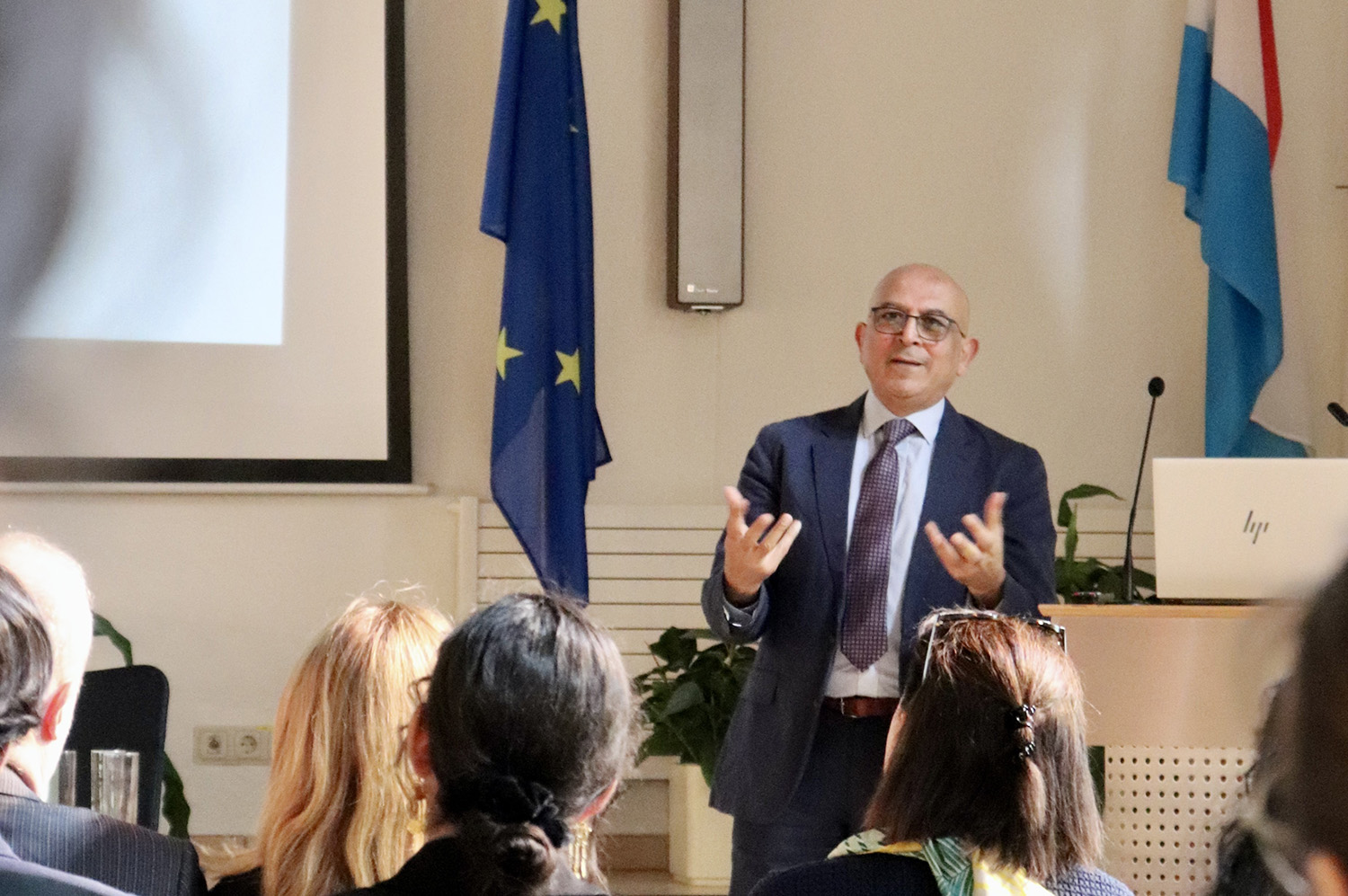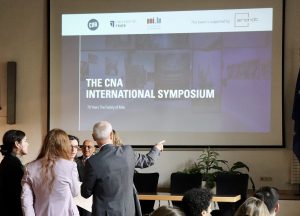On 24 May 2025, the Centre National de l’Audiovisuel (CNA), the Luxembourg Centre for Contemporary and Digital History (C²DH), and the University of Trier hosted a symposium on Edward Steichen’s ‘The Family of Man’ at Clervaux Castle. Seventy years after the photographic exhibition first came to life at the Museum of Modern Art (MoMA) in New York, research on ‘The Family of Man’ is still going strong.
After the opening remarks by CNA director Gilles Zeimet, TCAS (Trier Center for American Studies) director Nele Sawallisch, and Claude Ewert on behalf of the C²DH, it was the latter who took the floor as first speaker. In his presentation on the local reception of the Family of Man, Claude Ewert presented the initial troublesome relationship between Edward Steichen and his place of birth, and the rather indifferent reaction by the Luxembourgish authorities after receiving Steichen’s oeuvre. Ewert argued that the government then went into a mode of overcompensation in the mid-1990s, which resulted in a bizarre nation branding of an exhibition which is meant to be internationalist in its message. The presentation was concluded by arguing that this very message might need to be put into perspective, 70 years after its creation.
Emilia Sánchez González, who, like Claude Ewert, works on the FoMLEG Project (Legacy of the Family of Man) at the C²DH, presented the first findings of her PhD. In a speech entitled ‘A Family of Unlikely Venues’, the speaker took the audience to places like Afghanistan, Australia and Japan. By highlighting different venues that displayed ‘The Family of Man’ and the multiple actors who sought to control the local presentations of the exhibition, Sánchez González showed the highly pragmatic nature of the exhibition’s world tour. Whether it was an auto saloon, a tent outside of Kabul, or a department store, it became clear to the audience that where there was a will to have ‘The Family of Man’ exhibited, the organisers were not lacking in creativity.

Claude Ewert and Emilia Sánchez González © CNA
After a lunch break, the presentations were continued by Paul Lesch, commissioner of the Luxembourgish Steichen collections. Lesch showed how some of the pictures included in ‘The Family of Man’ had not been unbeknownst to Steichen, having previously come across them during his long engagement with the photographic magazine U.S. Camera. This led some to question the possibility of a “mental pre-selection” within the supposedly 2 million photos that the 503 photographs of the exhibition had been chosen from. One is left to wonder how many images were newly chosen from those 2 million, and in how far that might have been a promotional stunt.
Astrid Böger, professor at the University of Hamburg, focused on Robert Frank and one photograph specifically: that of five women having a coffee break at a diner. She showed the different versions of the photograph Frank had taken, highlighting that the version in the exhibition was not cropped. This is a stunning feat for this photograph, as many pictures of ‘The Family of Man’ were heavily cropped by Steichen, to the dismay of many of his photographer colleagues. In an interesting discussion, the audience tried to find arguments for and against the version of the picture chosen by Steichen.

Prof. Shamoon Zamir © CNA
The keynote speech was given by Shamoon Zamir, professor at the NYU-Abu Dhabi, who discussed the politics of ‘The Family of Man’ in the context of cosmopolitan citizenship. Zamir highlighted literary works and world events that likely influenced Steichen’s vision in creating the exhibition, and which would have also influenced its popular international reception. He also stressed the work of Steichen as a master-curator, and by while showing installation shots of the original exhibition at MoMA, invited the audience to pay close attention in their next visit to both the individual sequences in each room and the connections across rooms. He closed his talk by focusing on his interpretation of the last room — a carefully crafted ending of the exhibition path that asks visitors to exit the exhibition as more responsible citizens.
The event was concluded with remarks by Gerd Hurm and Gilles Zeimet, who invited everyone to join in future events discussing Edward Steichen’s work and “The Family of Man” at its 70th anniversary.
